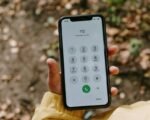Mobile banking has become the main way millions of people handle their finances in 2025, with over 70 percent of Americans using apps to check balances and make payments. But with rising fraud attempts, experts stress that safety depends on smart habits and strong bank protections to keep your money secure.
The Rise of Mobile Banking and Its Risks
In recent years, mobile banking has exploded in popularity. A 2025 report shows that digital transactions hit record highs, driven by convenience during busy lifestyles. Yet this growth draws criminals who target users through clever scams.
Fraud cases linked to mobile apps jumped 25 percent last year, according to banking industry data. Common threats include fake apps that steal login details and malware hidden in downloads. These attacks often start with a simple text or email tricking people into sharing info.
Users in urban areas face higher risks due to public networks, but anyone can fall victim. The key is understanding how these dangers work to stay one step ahead.
One recent event highlights the issue: a major scam wave in early 2025 affected thousands, where hackers posed as bank reps to gain access. This shows why awareness matters now more than ever.

Why Mobile Banking Can Be Safer Than Traditional Methods
Experts agree that mobile banking offers strong security when used right. Banks invest billions in tech like encryption to shield data, making it tougher for hackers than swiping a card at a store.
Your phone acts as a personal vault with features like fingerprint logins and instant alerts. Unlike physical branches, apps let you monitor accounts in real time, spotting issues fast.
A study from this year found that users with app alerts caught fraud 40 percent quicker than those without. This edge comes from built-in tools that traditional banking lacks.
Logical reasoning supports this: phones use layers of verification, reducing risks from lost cards or ATM skimmers. When combined with user caution, it creates a solid defense.
Top Threats Targeting Your Mobile Banking App
Cyber threats evolve quickly, and mobile banking is a prime target. Hackers exploit weak spots like unsecured downloads or careless clicks.
One big danger is app-based Trojans, which hide in innocent-looking software and steal info when you log in. Another is phishing via texts, known as smishing, where fake messages urge you to share details.
Public Wi-Fi adds risk, as open networks let attackers spy on your activity. Recent data from 2025 shows these methods caused losses over $10 billion globally.
| Common Mobile Banking Threats | Description | Prevention Tip |
|---|---|---|
| App-based Trojans | Malware in fake apps that steals login info | Download only from official stores |
| Smishing Attacks | Fraud texts mimicking your bank | Never click links in unsolicited messages |
| Public Wi-Fi Risks | Hackers intercept data on open networks | Use mobile data for banking |
Essential Tips to Secure Your Accounts
Protecting your money starts with simple steps. First, always download apps from your bank’s official site or trusted stores like Google Play or the App Store. Check reviews and developer names to avoid fakes.
Enable multi-factor authentication right away. This requires a code sent to your device, blocking thieves even if they guess your password.
Create strong passwords with a mix of letters, numbers, and symbols. Use a password manager to keep them safe and unique for each account.
Avoid banking on public Wi-Fi; stick to secure home networks or your phone’s data. Set up alerts for every transaction to catch odd activity fast.
- Report lost phones immediately to your bank to lock accounts.
- Never share one-time codes or personal info over text or email.
- Update your app and phone software regularly for the latest security patches.
These habits can cut your fraud risk by up to 80 percent, based on 2025 security reports.
How Banks Step Up to Fight Fraud
Banks lead the charge against threats with advanced tools. They use AI to detect unusual patterns, like logins from new locations, and flag them instantly.
Regulations require quick responses to reported fraud, limiting your losses if you act within days. Many offer zero-liability policies for unauthorized charges.
In 2025, several banks rolled out new features like biometric scans and virtual cards for safer online buys. This builds on past efforts, such as the response to a 2024 data breach that prompted industry-wide upgrades.
Choosing a bank with top ratings for security, like those with high marks from consumer watchdogs, adds extra peace of mind.
Choosing the Right Bank for Maximum Protection
Not all banks are equal in security. Look for ones with strong track records and features like customizable alerts and easy fraud reporting.
Compare options by checking user reviews and independent ratings. Banks that partner with cybersecurity firms often provide better defenses.
Recent trends show a shift toward apps with built-in VPNs for safe connections. Pick one that fits your needs, whether it’s a big national bank or a local credit union with personal service.
Staying Ahead in a Changing Landscape
As tech advances, so do protections. Experts predict more use of AI for fraud detection in 2026, but users must stay vigilant today.
Combine bank tools with your own habits for the best results. If fraud hits, contact your bank right away to minimize damage.
Share this article with friends to spread awareness, and drop a comment below on your top security tip. Your input could help others stay safe.








